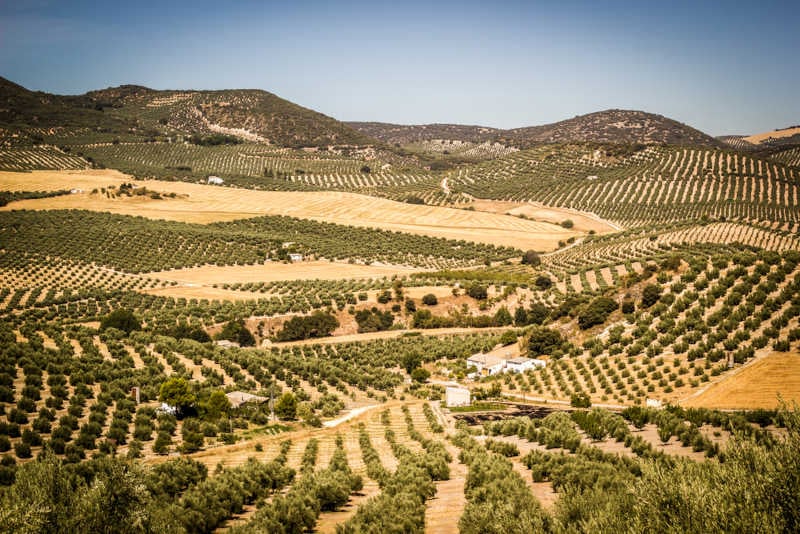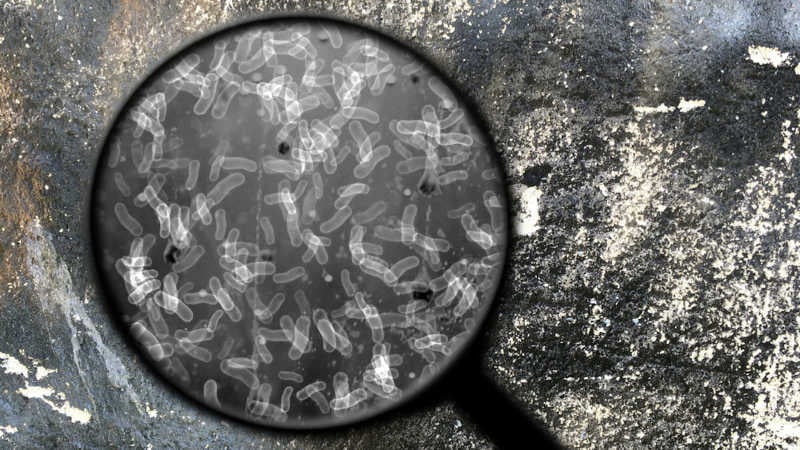For decades, soil has been treated as an everlasting food machine rather than as a fragile living thing, and it is reaching a crisis point. Understanding how the soil microbiome interacts with the environment and helping farmers embrace new sustainable methods can have a beneficial impact on the soil, and consequently, our health.
After years of agricultural overuse, fires, erosion and pollution, European soils are exhausted with a severe lack of nutrients. More than 60% of all soils in Europe are degraded due to unsustainable management practices, and about one-third of soil is no longer available for food production.
The glue of life
Human activity is provoking imbalances in the land by affecting the diversity and activity of the microbes that live in it. A single handful of soil contains around 10 billion bacteria, fungi and archaea, which act as drivers for nutrient cycles, providing a mutual benefit to plant roots and soil, thanks to an exchange of multiple chemicals.
“There is a kind of ‘glue’ being produced by soil microbes as a side product of their metabolic activity,” said Radoslav Bonk, CEO of the Slovak startup Nitroterra Technology. “This glue plays a crucial role in bonding together major soil particles, fungi, clay and organic particles. If this metabolic activity is suppressed, for example by the overuse of synthetic fertilizers, the healthy soil structure falls apart, making soil much more vulnerable to wind and water erosion.”
With the soil structure weakened, the whole process of plant growth is undermined. The plants have less resistance to pathogens and inadequate access to nutrients that they need to grow. Traditionally, mineral fertilizers have been used to minimize this problem, but they can pollute the environment. To combat this, several European companies have been developing microbial solutions that improve soil fertility in a more sustainable way.
Spain, prompted by its agricultural tradition and the severe situation of much of its own soil, is one of the leaders developing these new soil products. Living microorganisms designed to act as biofertilizers are starting to be accepted in the market, such as the bacteria Methylobacterium symbioticum, commercialized by the company Symborg, which secures the atmospheric nitrogen needed for the plant to thrive.
Another Spanish company, Ceres Biotics, has its own collection of strains such as Azotobacter sp or Frateuria sp. Each strain has a different type of gene expression and benefits the crops in different ways.
In addition, new beneficial microbial species are being discovered, such as Pseudomonas palmensis, found in a close relative of the tobacco plant in Las Palmas, on the Spanish island of Gran Canaria. These bacteria have the capacity to increase the resistance of plants in periods of drought.

Decoding the soil microbiome using bioinformatics
The convoluted cooperation and competition happening within the soil microbiome, and its interactions with plants, make it really difficult to determine which microbes are the most important in the synergistic ecosystem. Therefore, computational methods are being used to navigate this complexity.
“Before we select and apply bacterial strains, we try to assess major bacterial groups that are already in the soil. To do this, we have found that assessing metabolic diversity and metabolic rate is far more important than getting the list of microbial species through DNA analysis,” Bonk explained. “The ‘fitness’ level of bacteria and their actual activity and metabolism rate are crucial to us. To address the two, we use statistical methods applied to our microbiological analysis,” he added.
Along with bacteria, fungi play a critical role in soil health, creating symbiotic associations with plants. The most studied case among root-associated fungi is arbuscular mycorrhizal fungi (AMF). AMF can enhance the uptake of mineral nutrients and water by their host plants. But this type of fungus is found in only small amounts in the soil. To harness its potential, the French agritech startup Mycophyto researches, produces and implements indigenous AMF to interact with crops and soils as a biostimulant.
“We use bioinformatics tools in soil biodiversity to analyze the results of soil metagenomics studies to identify AMF species,” explained Mycophyto’s co-founder and CEO, Justine Lipuma. “This allows us to observe the fact that certain species are present in certain soil contexts and not others.”
To complete the process, the company uses artificial intelligence (AI)-based prediction models, which “integrate data identified as impacting the presence of species compared to climate, soil pedology and soil chemistry, and predict the presence of these species from GPS coordinates,” Lipuma commented. For example, Mycophyto has worked with winegrowers to maximize the life of the soil, in order to grow vine plants that are more resistant to drought and disease. The startup is growing fast, and is already targeting other markets, such as home gardening or arboriculture.
Another company taking a data-driven approach is Biome Makers. Founded in Silicon Valley in 2015, the company combines DNA sequencing with AI and uses a global database of 10 million microorganisms and 35,000 soil samples. The firm is helping farmers better understand how their land’s soil microbiome might impact growth for a given crop. According to the company, its method was used by large olive oil producers in Portugal to get more information about microbial interactions within their soil. This way, the oil producers could focus their soil fertilization strategy by preserving the microbial communities that mobilize the most nutrients.
In Germany, the agritech company Computomics is also analyzing microbial environments using bioinformatics. The firm has created a virtual model to predict all possible hybrid plant strain crosses and select the best-performing ones. One of their cases was a breeder from a mid-size seed company with 320,000 possible double-haploid maize crosses, who only had available space to evaluate 2,500 hybrids in the field.
As Bonk confirms, the potential of using AI is huge from the research point of view, however, he also comments that they are not using it in their current approach. “We believe cheap bacterial fertilizer production, simple application, and carefully chosen soil microbiome indices will prevail above the detailed and full-scale soil microbiome mapping from an economical and effectiveness point of view.”
Farmers have the last word
A common obstacle for the adoption of new microbiome-based solutions in agriculture is that many farmers, who are constantly dealing with low profit margins, are not very open to accommodating any alternative approaches. “Some of the technologies to improve soil health are actually well known,” said Yakov Kuzyakov, professor and the head of the Department of Soil Science of Temperate Ecosystems at the University of Göttingen, Germany.
Kuzyakov pointed out one of the key issues for the expansion of some sustainable applications is whether farmers will use them or not. “It is not cheap, and may lead to a decrease in yield, because the management intensity should decrease to improve soil health.”

At La Junquera, a farm located in Murcia, in the South of Spain, the owner Alfonso Chico de Guzmán has been adopting sustainable methods for the last few years, but not biotechnologies based on the microbiome.
“The truth is that I have not used these products for my soil yet … Some are saying that they are very effective; others, the opposite,” said de Guzman. Either way, he is looking forward to discovering new improvements. “We are still using traditional methods to do soil analysis … But I think it would be really interesting to adopt new technologies.”
As Bonk remarked, the potential of the soil microbiome could expand soon: “There is a chance that due to the increase of synthetic fertilizer prices, there might be a momentum for bacterial fertilizers, economics being the major driver.”
Much European agricultural land has been focused on monoculture for a long time; more productive in the short term, but unsustainable in the long run. This was the case for Portuguese farm Quinta da Cholda, until its owner, the agronomist João Coimbra, became more aware and turned it into an example of sustainability, trying to understand every detail of the soil.
“We must know our soil,” Coimbra advised in a seminar organized by the European Innovation Partnership for Agricultural Productivity and Sustainability. “Some parts need to be fertilized, others not, alongside livestock to help boost soil health.”
“Today all farmers ask themselves the same questions: how to produce better and more with less,” Lipuma summarized. She believes that the reluctance of some farmers to use microbiome-based products “is due to the lack of support on the subject, and the lack of effective products on the market.”
To meet the needs of soils and producers, the solutions must be accessible and easy to use in order to be integrated into agricultural models. “To do this, startups must be given the means to quickly industrialize their solutions once they have proven their effectiveness,” said Lipuma. “Startups must come together, this is what we are doing within the digital farm,” she concluded.
A European law for soil protection
The efforts of startups and farmers should be complemented by European institutions. A new EU soil health law is projected by 2023. If backed by European members, it will become the first EU-wide law protecting the soil, reaching the same legal status as water and air. However, Kuzaykok warned that it “depends how fast the EU law will be implemented in individual countries … Maybe a few farmers will follow the EU law, but probably not many.”
A similar point of view is shared by Copa-Cogepa, the united voice of European farmers and agri-cooperatives. The general secretary, Pekka Pesonen, explained that the group wants the European Commission to focus on healthy soil, but he also cautioned that “the plan to bring in a common soil law for the entirety of the European Union is truly troubling.”
“Soil is a local issue, a resource that changes from field to field, from region to region,” added Pesonen. “By introducing another law, there is an even greater chance that this will lead to duplication of rules, regulations and conditions.”
Cover image via Elena Resko. Inline images via Shutterstock.





